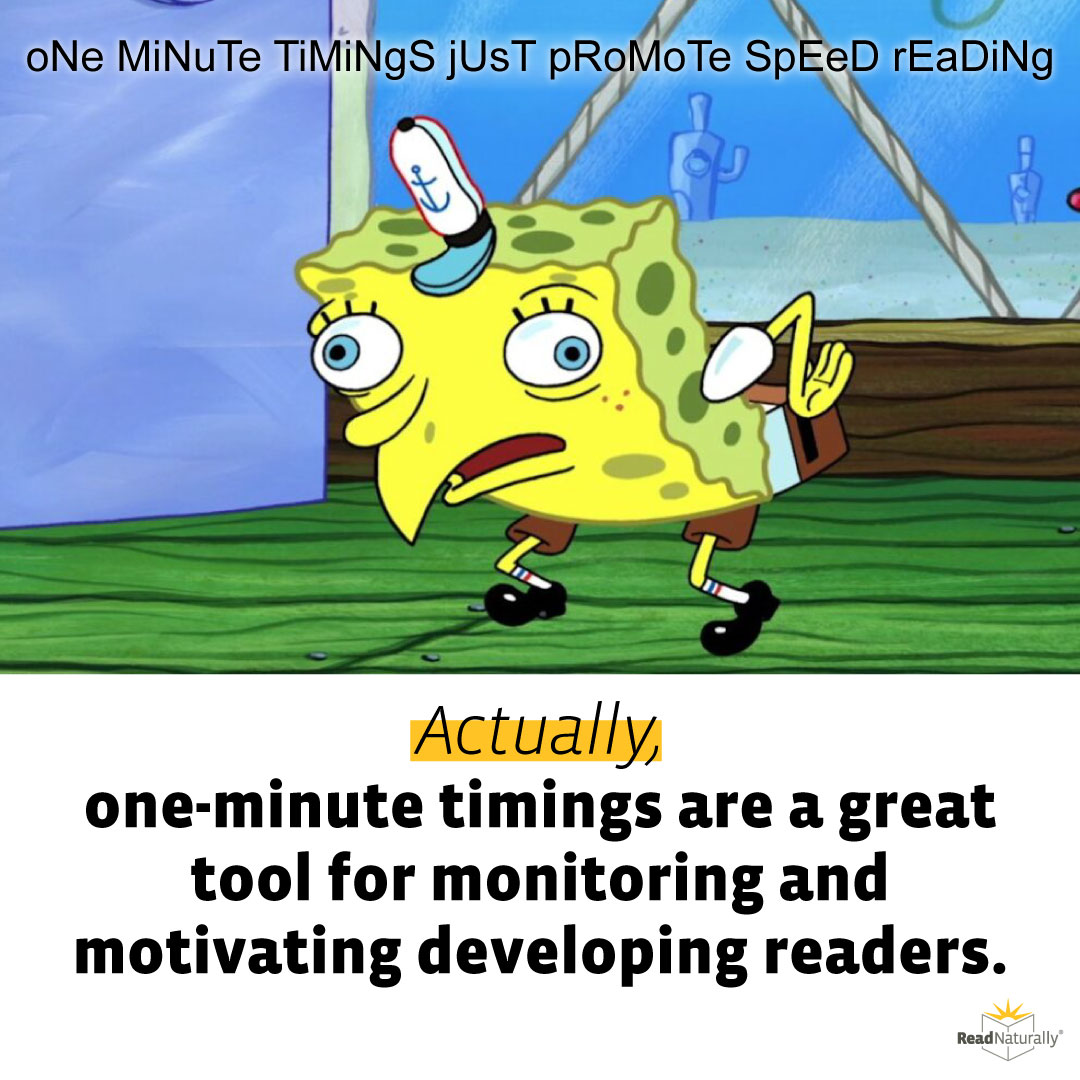 In the literacy education landscape, one-minute timings often find themselves at the center of discussion—and sometimes misconception.
In the literacy education landscape, one-minute timings often find themselves at the center of discussion—and sometimes misconception.
Critics argue that these timings only foster stress and promote speed reading. It’s true that one-minute timings, when introduced without proper framing, can indeed lead to stress or a misguided emphasis on speed. But that isn’t the whole truth. When used in an appropriate way, one-minute timings can be a highly useful tool.
The purpose of a one-minute timing is to measure oral reading fluency. Oral reading fluency is where a lot of misunderstandings around speed reading are born. Oral reading fluency is made up of three components: accuracy, expression, and rate. Rate is only one of three essential components, and it does not equate to speed reading. Rather, oral reading rate is about reading at a pace that is natural and conversational.
Developing oral reading fluency is essential because it is the gateway to automaticity and thus comprehension. As readers become more fluent, their cognitive load is lessened, allowing them to concentrate more on comprehending the text. For more information on fluency, check out our article, What Is Fluency?
One-minute timings are a valuable tool for developing oral reading fluency. They are not about pushing developing readers to read faster, faster, faster—rather, they are a precise tool for measuring progress. One-minute timings can provide educators with concrete data, allowing them to track students' growth and tailor instruction accordingly. Additionally, students are motivated by seeing their own progress, and words-correct-per-minute graphs serve as great visual representations of their improvement. Having concrete data about their growth is highly motivating for developing readers. What’s more, one-minute timings are short, accessible, and effective assessments for reluctant readers who may be intimidated by the idea of a reading assessment or who struggle with reading stamina.
Now, it’s natural for students to become anxious or turn on that “speed reading switch” at the sight of a timer. This is where the art of teaching comes into play. Remind your students that the one-minute timings serve as practice. With practice, they will improve—and the timings will reflect that. By emphasizing the purpose behind timings as a measure of growth, rather than a race, educators can frame this exercise in a way that motivates students and allows them to reach their reading goals more quickly. For more tips on nipping the speed-reading tendency in the bud, check out our blog, 7 Tips to Slow Down Your Speed Readers.
One-minute timings, when used responsibly, are a fantastic tool to support educators in fostering and supporting the growth of developing readers. Do you use one-minute timings to measure oral reading fluency? Please share your experiences with our readers!
 Share your student’s success story—nominate him or her for our Star of the Month award. Win a Barnes & Noble gift card for the student and a Read Naturally gift certificate for your class!
Share your student’s success story—nominate him or her for our Star of the Month award. Win a Barnes & Noble gift card for the student and a Read Naturally gift certificate for your class!
My students use 1 minute sand timers to collect data on their fluency independently. While doing so they are retaught about the 5 components of fluency: accuracy & clarity, volume, expression, phrasing/ pausing (notice punctuation) and finally rate. They ‘dab’ each other with positive feedback based any competent. I find students comfort with one another grows stronger as well as confidence. Reading becomes something they want to do not have to do.